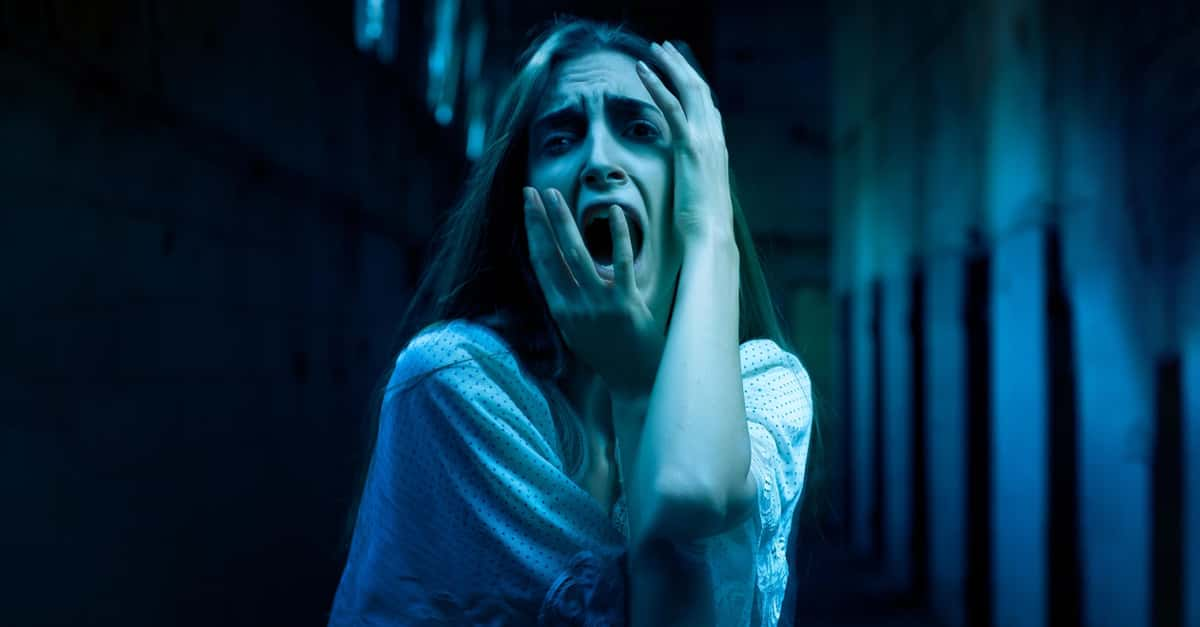In a time before the internet, when entertainment options were limited to what could be found on the shelves of video rental stores, you might hear whispers among groups of friends about a film that couldn’t be found in your local Blockbuster, and could only be passed around among friends—because it was allegedly real footage of a team of filmmakers being stalked and massacred by a tribe of killers in the Amazon rainforest.
It Begins
That film was Cannibal Holocaust, and the morbid fascination it sparked has to do not only with the fact that it purports to be made of found footage, but also that it was banned in many countries after its release. The film, released in 1980, is about an anthropologist tasked with finding a missing American documentary film crew who had been working in the Amazon rainforest. The story of the anthropologist’s journey acts as something of a framing device for the “main attraction”—graphic, purported “found” footage that exposes the documentary crew’s practice of staging horrific scenes, and also depicts the crew attacking and murdering a girl from the local tribe, only to be massacred in retaliation. The misdeeds of the documentary crew, along with the commentary by the anthropologist character are used as a way of attempting to make the film a critique of exploitative journalism. The director, Ruggero Deodate, was said to be influenced by the infamous Italian Red Brigades—he believed that the media had staged some of the more dramatic incidents of terrorism that they’d shown.
For obvious reasons, Cannibal Holocaust garnered a lot of attention and controversy when it was released, due to its graphic nature and its purported use of found footage. After its massive success on the first weekend it was released, Italian authorities attempted to confiscate the film, but Deodato had arranged to have it covertly distributed to other countries. Deodato was arrested on obscenity charges, and later even was brought in on murder charges when persistent rumors that the film featured real live murders became too much for police to ignore. Although those charges were dropped, the graphic nature of the film led to it being banned in multiple countries.
Controversy or Free Marketing?
Of course, all of the abovementioned incidents only served to draw more attention to the film, and the filmmakers courted this controversy as a means of marketing the film. In order to make the “found footage” portion seem as real as possible, the actors portraying the documentary crew had a clause in their contracts which stipulated that they not appear in other movies for a year following the film’s release, leading to questions about their whereabouts and lending veracity to claims that they had, in fact, died on camera. In order to prove that he’d not harmed the cast members, Deodato ended up putting investigators in contact with the (very much alive) actors and having to testify as to how certain gruesome special effects were orchestrated. He also went on to challenge bans of the film for years after its release.
Despite the disproval of the film’s claim to having been composed of found footage, in a time before Wikipedia, salacious rumors about the content of the film spread like wildfire, giving it instant cult status and driving people to find and share bootleg copies of it, including alternate or edited versions. The mystique surrounding the film was undeniable—and it was only a matter of time until it was recreated.

Who Decides What's Real?
Much as it did in Cannibal Holocaust, the idea of presenting “found footage” as real found its niche in the horror genre, where it was able to present the most shocking, salacious, and graphic content of all as real, increasing the effect of the onscreen violence on the credulous viewer. Of course, how well that effect actually worked depended on the film, and for many years, the found footage trope was primarily used in little-seen B-horror films, including such creatively titled gems like Alien Abduction: Incident in Lake County and Guinea Pig 2: Flower of Flesh and Blood. In the early 90s, Charlie Sheen was given a copy of Guinea Pig 2, and reported it to the FBI, as he believed what he was watching on screen was real. Much as Deodato had once been forced to the do the same, producer Hideshi Hino was forced to prove that the killing featured onscreen was an act.
The genre didn’t get much further attention until the dawn of the age of the internet—the era of HTML 2.0, when usage was expanding rapidly among family households, but before the web was dominated by Google, Amazon, and assorted social media networks. It wasn’t uncommon for film distributors to set up websites for upcoming releases—hello, famously still existent Space Jam site—but one film set itself apart from the rest in that period, using the mystique of the found footage genre and the power of the internet to become a marketing juggernaut: 1999’s The Blair Witch Project.
A Global Phenomenon
The conceit of The Blair Witch Project is well-known—a team of documentary filmmakers goes missing while investigating a figure of local renown called the Blair Witch, and the footage they left behind is later found and cobbled together by investigators searching for clues about their fate. The filmmakers emphasized the supposed veracity of the found footage during every party of the filmmaking process, from casting unknown actors to the marketing touch of the official website featuring fake police reports that “documented” the disappearances. When the film screened at Sundance, missing persons posters were produced with the casts’ faces. The Blair Witch filmmakers also produced a short “documentary” about the legend that the crew in the film investigates which aired before The Blair Witch Project was released.
The overall effect was that the film became a huge success—the website and the questions over the reality of it all made it a viral success before the word “viral” was ever used in that context. Its legacy is as impressive as its financial and critical success, as it inspired numerous other films in the horror genre, including Paranormal Activity, REC, and V/H/S. Of course, there’s also the scores of less successful B-level “found footage” horror films that it spawned in its wake, as well as its two underwhelming sequels.
While the “hype” around the idea of these purported found footage films has died down in the 20 years since the release of The Blair Witch Project, the interest in films like this speaks to the audience’s desire for something real and authentic in their scares—something new, that they’ve never seen before, something more life-changing than your regular haunted house, creepy doll, or simply jump scare. These found footage films represented a new possibility—but whether it’s one that ultimately failed or succeeded will be decided by whether the conceit continues to be used or is replaced in the future of horror films.













